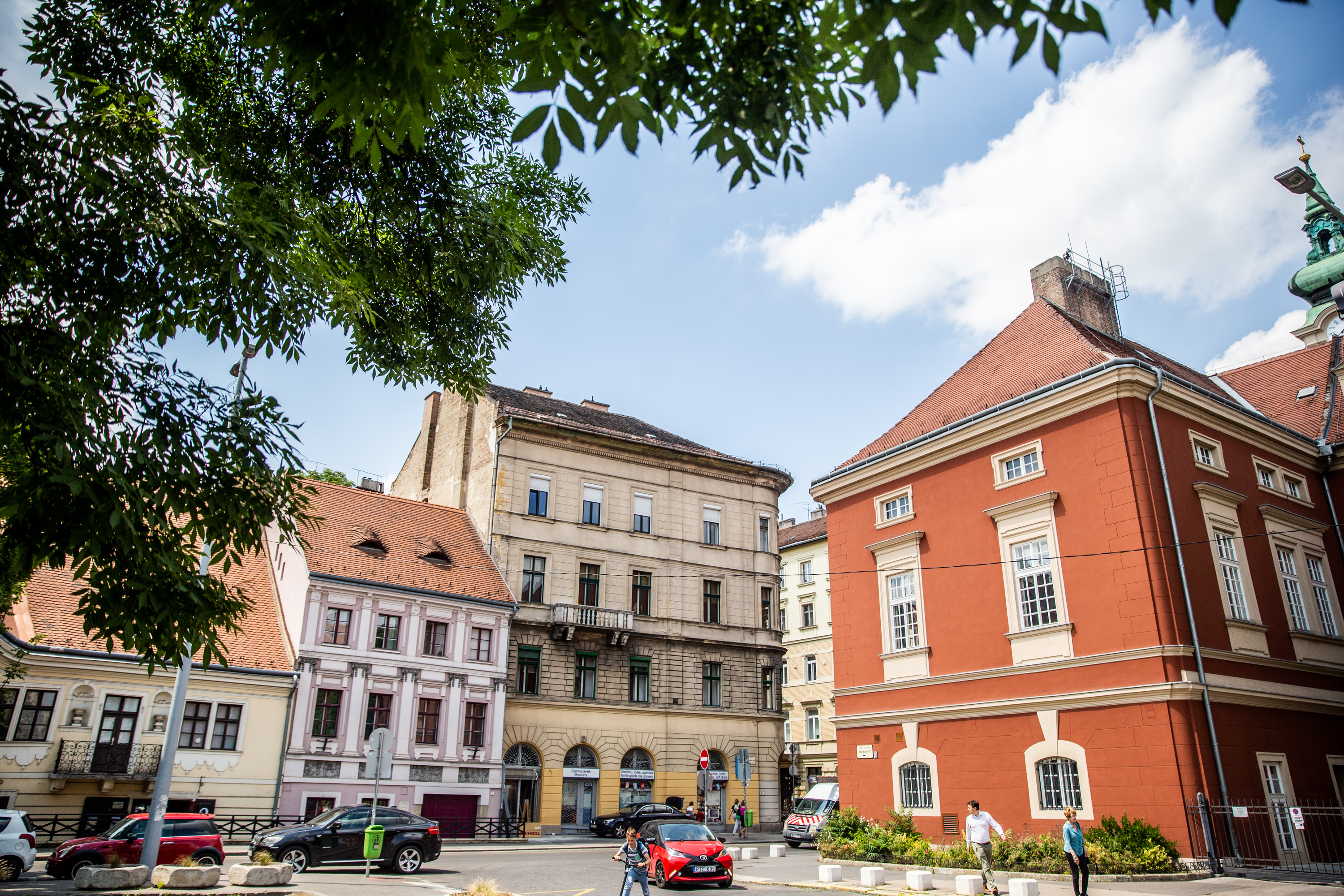If you're after true hidden gems in Budapest, Víziváros is a great place to be. It's quieter than the Castle District but just as rich in history, and with stunning architecture to match. Think Baroque cottages, winding cobbled streets, grand palaces, Transylvanian folk-style houses, sleek contemporary buildings, and breathtaking Danube views. Oh, and traces of the Palaeolithic age.
Stroll down Fő utca (lit: Main Street) until you reach Corvin tér, an elegant square fronting the Buda Vigadó – now home to the Hungarian Heritage House and the gorgeous Folk Fashion exhibition. Near the entrance, you'll spot a small glass-and-iron container. Inside? The preserved plaster cast of two sets of footprints dates back roughly 32,000 years. And also, they are very probably marking the memory of the area's very first inhabitants.

The so-called 'Primordial Mother' memorial was given a special display in 2010. These traces, dating back to the Palaeolithic period (around 30,000 BCE), were likely left in the Danube's mud by a mother and her child.

The traces were discovered in the 1990s, 3.5 metres below the surface, during plans to relocate the National Theatre. As part of this plan, a deep underground car park was proposed for Corvin tér. Although it was never realised, it sparked archaeological excavations in the area. These excavations revealed that, at one point, the Danube had a branch that stretched toward Szalag and Iskola utca, also forming an island. A small community lived on this island, sustaining itself through fishing and hunting.
In addition to the two footprints, a wealth of artefacts was uncovered, including fragments of everyday objects and the remains of a small building – though the latter could not be fully reconstructed.
Footprints like those found here are quite rare. However, District I is home to plenty more historical treasures waiting to be discovered.
(Cover photo: We Love Budapest)






